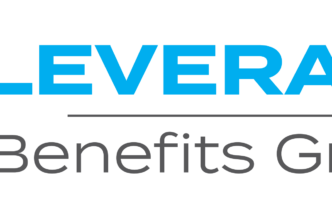Printed with permission, excerpt from article written by Mark Ritter, CEO, MBFS (Member Business Financial Services)
Tax reform” has been quite the buzzword since the Tax Cuts and Jobs Act of 2017 passed Congress over a year ago. Depending on your political allegiances this could be great for America or the biggest mistake our country has ever made. Now that 2018 financials and tax returns are starting to trickle in, those of us in the lending and financial world are beginning to ask: how does this change our underwriting? Many of us have only seen very minor adjustments to tax returns over our career and most of our software systems were built for the pre-tax reform era. The big question for those of us in commercial lending is how we handle personal cash flow analysis. Previously, much of the industry would simply take a borrower’s income and reduce the amount by federal taxes and the itemized deductions. Simple enough.
Today, most experts conservatively estimate that 90 percent of Americans will take the new standard deduction of $24,000 for a married couple or $12,000 for an individual. By carrying through this deduction of $24,000 to a borrower’s cash flow, we could end up denying creditworthy individuals the financing they need in many cases. I live in suburban Philadelphia so coming up with $24,000 of actual expenses on my tax returns isn’t too difficult. However, for much of America, the $24,000 deduction to your income will drastically understate your actual cash flow to pay back a loan. The unfortunate answer to how to properly analyze cash flow is by collecting additional information to help your institution make solid credit decisions.
For individuals part of a commercial loan seeking financing, the best practice is to collect their real estate tax bills (or know where to look them up online), W-2 forms, and 1098 forms. This will help in recreating the actual expenses a borrower has during the year. Two common, additional areas of itemized deductions are medical expenses and gifts to charity. In my opinion, trying to recreate these areas of expenses could be extremely frustrating without yielding much value in the credit decision process. The good news is that this information should be readily available to most borrowers.
For those individuals with itemized deductions, there is one other potential glitch this year that could potentially overstate your borrower’s income. There is a $10,000 limit on state and local taxes, which includes real estate taxes. For many of my friends in New York and New Jersey, there could be substantial expenses that are not included in their expense total. On the new 2018 Schedule A form, line 5d states the actual state and local taxes paid. On line 5e, individuals enter the lesser of “$10,000” or 5d. To accurately calculate cash flow, you will need to add back the difference between line 5d and 5e. This number is also an interesting exercise to see who now has actual tax expenses that aren’t deductible in this new world order.
Here’s a quick synopsis of how to evaluate cash flow for 2018 tax returns:
1. Collect W-2 forms, real estate tax bills, and 1098 forms along with 2018 personal tax returns
2. Did the borrower itemize deductions?
- If Yes, add back the standard deduction amount and reduce cash flow by the sum of state and local taxes, real estate taxes, and interest paid
- If No, reduce the borrower’s net income by any taxes not included (the difference between lines 5d and 5e on Schedule A)
I could write a book (although it would be a very boring book) on all the possible implications the Tax Cuts and Jobs Act of 2017 may have on the lending world. For Example: Did you know that if your borrower receives a lawsuit judgment or settlement, the entire amount will now show as income even though a sizeable portion went to their attorney? There are many other examples, and this will surely evolve over time. However, one thing is certain today – if you don’t change your practices you could make some very poor credit decisions. Stay tuned.





